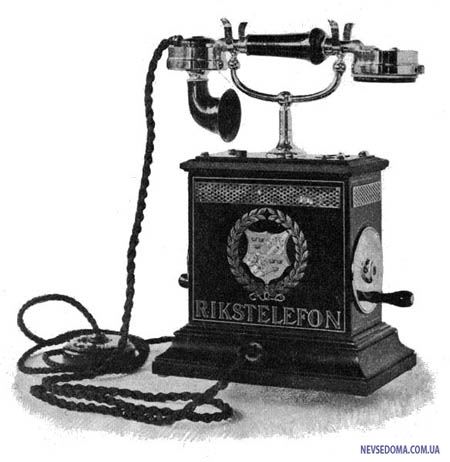Phone history (photo + text)

Alexander Graham Bell, inventor of the first telephone
The telephone is a unique invention whose task is to transmit sound over a distance. The history of the telephone goes back a long way. There is information that in 968, a Chinese inventor created a device called thumtsein that transmitted sound through pipes. Even in ancient times, they used the so-called rope telephone. A rope was stretched between two diaphragms and it was possible to talk over short distances. In this case, sound was transmitted from one end to the other due to vibrations of the rope.

But these were primitive telephones that transmitted sound using vibrations. The history of the telephone, which transmits sound using electricity, dates back to the second half of the 19th century. The first person to use the word telephone was Charles Bourcel; in 1854, he published a dissertation in which he described the principle of operation of the telephone, but it did not come to practical application.
The first device that could transmit musical tones (not a voice, just tones) was invented in 1861 by the German physicist Johann Philipp Reis. He called this device Telephon.

The world's first telephone designed for speech transmission was invented by Alexander Bell. He participated in a competition to solve the problem of multiplexing telegraph circuits and discovered the telephony effect. And on February 14, 1876, he submitted an application to the patent office for his invention. On the same day in Chicago, only two hours later, a similar application was submitted by E. Gray, who also participated in the competition to solve the problem of compacting telegraph circuits.
But since Alexander Bell was the first to apply, he received a patent for his invention. Therefore, the first person to invent the telephone is Alexander Bell.

Replica of Alexander Bell's 1877 telephone.
Alexander Bell's phone had many shortcomings. The handset served both for transmitting and receiving speech, operations were carried out in turns, there was no ringer on the phone, the call was made through the handset using a whistle, the communication range was not long, the range of the line did not exceed 500 meters. But despite its shortcomings, this telephone was a revolutionary discovery and gave a strong impetus to the development of telephone communications.
Subsequently, many inventors improved the first telephone, dreaming of making home wired telephones a reality.

Thomas Edison made a great contribution to the development of telephone communications; in 1877-78 he invented a carbon microphone with coal powder. His invention worked until 1980, and in some places it is still preserved.

But a wired telephone in itself does not mean anything. In order to make calls within the city, a telephone exchange is required. The first telephone exchange was built in New Haven (USA) in 1978. The next telephone exchange appeared in Paris (1879), and in 1881 in Moscow, St. Petersburg, Odessa, Berlin, Riga and Warsaw. Thanks to these stations, the first wired telephones were able to connect with each other and perform their main function - transmitting human speech over fairly long distances.

The first telephone exchanges were manual; in order to connect two telephones, there was a telephone operator at the station who made the connection. But in 1879, three American inventors M.D. and T.E. Kennedy and T.I. McTighe invented an automatic switch that connected telephones by dialing a number. From that moment on, the development of numbered telephones was given impetus.

I would like to draw the reader’s attention to the fact that in our country the development of telephone communications was given very great importance. We were one of the first to have telephone exchanges, and even in three cities at once. In addition, in 1877 in St. Petersburg, the plant of the German company Siemens and Halske began producing telephones with two handsets, one for receiving and the other for transmitting speech. Russian scientists also made an important contribution. In 1878, Russian electrical engineer P.M. Golubitsky began to use a capacitor in telephones and also developed the first Russian telephone that used permanent magnets. A little later, in 1885, he invented a centralized power supply system for telephone microphones.

At the end of the 19th and beginning of the 20th, a telephone boom began all over the world, there was extensive construction of telephone exchanges and intercity lines, the longest of which were Moscow-St. Petersburg 660 km, Paris-London 498 km, Paris-Brussels 320 km.
At the beginning of 1910, there were more than 10,000 telephone exchanges around the world that served more than 10 million telephones.

Today, the development of telephone communications has reached its heights. Almost every person in the world has a wired telephone and a wireless cell phone. Telephones provide communications throughout the world and allow people to communicate from a distance. And 150 years ago, telephone communication was the dream of many inventors and enthusiasts.






















